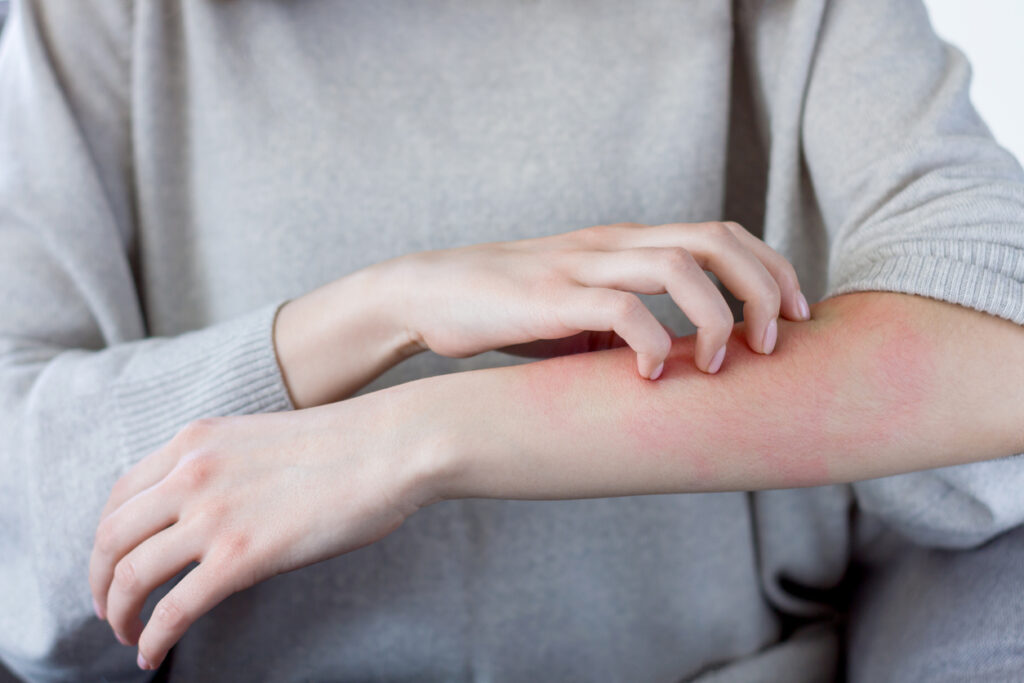Adolescents with moderate to severe atopic dermatitis (AD) continue to do well on upadacitinib (Rinvoq, AbbVie) for up to 76 weeks with no new safety signals, according to data from three Phase 3 randomized clinical trials published in JAMA Dermatology.
Fully 542 adolescents aged 12 to 17 received once-daily upadacitinib (15mg or 30mg) with or without topical corticosteroids in The Measure Up 1, Measure Up 2, and AD Up studies. The main takeaway? Upadacitinib was effective in treating moderate to severe AD in adolescents, with responses maintained through 76 weeks of treatment. What’s more, no new risks were observed.
“Upadacitinib, in several reports, seems to be the most efficacious of the currently available treatment options for treating adolescents with moderate to severe AD,” study author Amy S. Paller, MS, MD, Chair of the Department of Dermatology and the Director of Skin Biology and Diseases Resource-Based Center and the Walter J. Hamlin Professor of Dermatology at Northwestern University’s Feinberg School of Medicine in Chicago, tells TDD.
In the Measure Up 1, Measure Up 2, and AD Up Phase 3 trials, Eczema Area and Severity Index-75 (EASI-75) was achieved by 89.1% of adolescents taking 15mg upadacitinib in Measure Up 1, 84.4% in Measure Up 2, and 87.8% of AD Up at Week 76. In addition, 96.1% of adolescents taking upadacitinib 30mg in Measure Up 1 hit EASI-75, as did 93.6% in Measure Up 2 and 82.7% in AD Up trials. Efficacy measured by achievement of the Validated Investigator Global Assessment for Atopic Dermatitis (vIGA-AD) score of 0 or 1 and Worst Pruritus Numerical Rating Scale WP-NRS improvement of 4 points or more from baseline was similarly maintained or improved through week 76 for adolescents taking upadacitinib ay 15mg or 30mg, the researchers report. The findings are consistent with reports in adults through week 52,
First, Do No Harm

“There have been concerns about JAK inhibitors because the older generation ones in older populations of patients with non-skin inflammatory disorders (especially rheumatoid arthritis) have been associated with potential risks that are serious,” says Dr. Paller “To date, we have not seen these in our population with atopic dermatitis, which in the US is treated with more selective next-generation Janus kinase (JAK) inhibitors.”
There are safety concerns, despite not seeing any of the more serious adverse events that led to a pan-JAK inhibitor boxed warning by the FDA. “Acne is the most common side effect, but herpes infections (especially herpes zoster) and neutropenia are also increased with these drugs,” she says. “In adolescents, the use of these medications is likely to be longer in duration, given the earlier start of administration and often lifelong disease.”
Biologics are typically the first-line therapy for treating this population (and certainly down to 6 months of age for the initial biologic, dupilumab (Dupixent, Sanofi & Regeneron) based on their known safety profile with several years of additional experience, no increase in infections, and no requirement for lab monitoring.
“However, for needle-phobic adolescents and those who do not respond adequately to one or more biologic, we consider the use of a JAK1-selective inhibitor,” Dr. Paller says.
“Some consideration is also given to whether a short-term treatment (e.g., seasonal or a flare before an important event) is needed or if there is a concomitant disorder that could respond to a JAK inhibitor (e.g., alopecia areata or vitiligo) is present.”
Access is always part of decision-making as well, she adds.
It is critical to warn families about the boxed warning since pharmacists will tell them about the potential risks of emboli, cancer, cardiovascular disease, serious infection, and death. “Any one of these warnings could dissuade a family from use and erode trust in us as dermatologists,” she says.
This important conversation needs to be stated in the context of the study that led to the warning (> 50-year-olds with rheumatoid arthritis and at least one cardiovascular risk factor with the first-generation tofacitinib + tumor necrosis factor inhibitor (TNF) compared with TNF inhibitor alone).
It “may be irrelevant concerning the more targeted JAK inhibitors (including upadacitinib) in a healthy younger population, so accruing long-term data on the safety of these JAK1-selective inhibitors is critical,” she says. “We always mention the boxed warning, talk about what is likely to happen (acne), unlikely to happen but possible (herpetic infections, lab abnormalities particularly neutropenia and increased creatine phosphokinase), and we weigh the risks and benefits with the family and adolescent towards shared decision making about starting a JAK inhibitor.”


